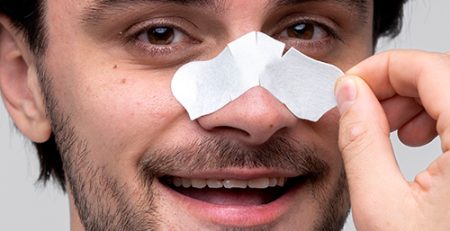How is Nose Aesthetics Performed?
Rhinoplasty can change the bone, cartilage tissue, skin layer or all three, as deemed necessary. When planning rhinoplasty, the rhinoplasty surgeon will consider other features of the individual’s face, the skin in the nose, and what the individual wants to change. Candidates deemed suitable for nose surgery will develop a personalized plan for them. As with all major surgeries, rhinoplasty carries various risks. Risks of infection, bleeding, and an adverse reaction to anesthesia are always present in major surgeries. There are also separate risks specific to rhinoplasty.
These include difficulty in breathing through the nose, permanent numbness in and around the nose, uneven nose, pain, discoloration or permanent swelling, scarring, septum perforation , and the need for additional surgical intervention. Detailed information about these risks is conveyed by the rhinoplasty surgeon to individuals considering the rhinoplasty phase. Before proceeding to the planning stage of rhinoplasty, an interview is held between the doctor and the individual considering the rhinoplasty stage to determine whether the surgical operation will be effective. In this interview, the medical history of the individual is revealed. The most important question the doctor will ask is about the individual’s motivation and goals for the surgery.
At this stage, the most important detail for the final results to be as desired is to express the wishes and goals in a completely honest way. The surgeon will clearly explain to the rhinoplasty candidate what rhinoplasty can and cannot gain. After that, he will collect information about nasal congestion, past surgeries and medications used. Individuals with a bleeding disorder such as hemophilia may not be candidates for rhinoplasty. During this process, the doctor will perform a complete physical exam, including laboratory tests such as blood tests. He will also examine the facial features of the rhinoplasty candidate and the inside and outside of his nose. In this way, it is possible to determine what changes need to be made and how physical characteristics such as skin thickness or cartilage strength at the tip of the nose can affect the results. Physical examination is also important to determine the effect of rhinoplasty on breathing. Photographs of the nose can be taken and images can be manipulated by the surgeon with computer aid to show what results are possible.
The rhinoplasty surgeon will also use these photos for before and after evaluations, during surgery and for long-term reviews with reference. If the individual has a small chin, the surgeon may also talk to the rhinoplasty candidate about having surgery to enlarge the chin. Because a small chin will create the illusion of a larger nose. In these cases, chin surgery is not necessary, but a better balance can be achieved in the facial profile. It is usually possible to leave the hospital on the same day after nose surgery . It is important to have someone available to assist you to return home, especially if the surgery will be performed on an outpatient basis. During the first few days after anesthesia, memory loss, slow reaction time, and difficulty making decisions may occur. Therefore, it may be helpful for a friend or family member to stay with the patient for a night or two to assist with post-surgery assistance.





Bir yanıt yazın